#Encyclopedia of Fairies
Text
A Missed Mystery: Who is Hanoun?

All credit for this discovery to @veskscans
The name of Daleth's fairy lover in smt2 (JP: アヌーン)has almost always been assumed to be correctly translated as "Hanoun", but what the heck is a Hanoun? This identity doesn't fit the scenario nor does it bring up anything but smt with a search. The culprit is probably old smt books that provide romanizations like these:
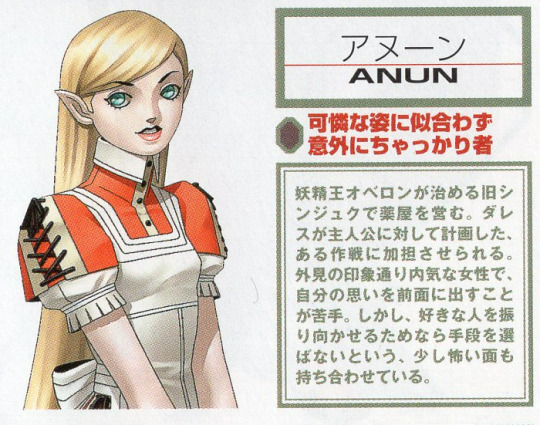
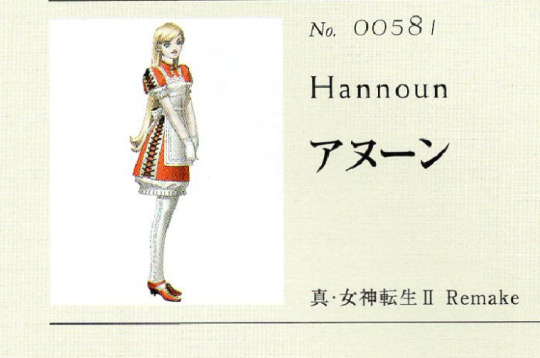
They make some sense considering アヌーン itself is pronounced "ah-noon", but we all know Cu Chulainn isn't really pronounced "koo koo lane ." So what gives?
The truth is they may just be romanization guesstimates for yet another being of Celtic provenance (specifically Welsh, as it turns out).
Vesk tracked down the following entry in Katharine Briggs' ever-relevant-to-smt Encyclopedia of Fairies (a confirmed atlus source):

GWRAGEDD ANNWN.
The entry gives the English phonetic pronunciation gwrageth anoon, which just so happens to be the same as the Japanese. The background of her being a lake maiden who falls in love with a mortal gives more depth to the smt2 scenario than we ever realized.
So, judging by her name in katakana, she should just be romanized as Annwn.
So far, her name has only ever appeared once in an English localized game: as a demon trader in Soul Hackers. Now that the real intention behind her is known, by the time we get to an smt2 remake or port, there will be no excuse for more "Hanoun."
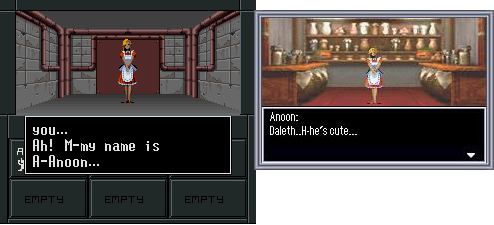
#shin megami tensei#megaten#kazuma kaneko#smt2#hanoun#annwn#daleth#アヌーン#GWRAGEDD ANNWN#welsh folklore#wales#Katharine Briggs#Encyclopedia of Fairies#mystery demons
95 notes
·
View notes
Text
Honestly ya'll I really dislike the Encyclopedia of Fairies by Bane Theresa, she essentially just went through world mythology and just slapped the fae label onto anything that has any sort of connection with nature and it's so INFRIATING how it directly calls something as being apart of the fae but then within the fucking books own energy itself it directly contradicts itself by mentioning they're a completely different nonhuman species entirely, IT REALLY JUST ANNOYS THE FUCK OUT OF ME😭 I've been thinking about kind of creating my own like speculative classification system for mythological beings purely out of spite for this one book tbh
I personally think she's one of the writers that have influenced this idea that some people have about the "fae existing on every single continent" belief that I've seen some Celtic pagans regurgitate and it honestly doesn't really sit right with me since yeah if you're just casting the net as wide as fucking possible and including every single nonhuman being that's even remotely connected with nature then of course you're gonna come to that conclusion 💀
I've been getting into like speculative biology so this has been on my mind for the last couple of days and just how absolutely disorganized all of the actual classifications for mythological & fictional monsters/beings actually is so I might end up just cobbling together my own methods cuz my autism hates how vague it all ends up being and also how it can sometimes be used negatively against other cultures and is kind of a colonization tactic that's been used for a really long time most notably by the Romans and later on by the colonial powers so even though there's no actual intention to do harm it's somewhat rooted in not great methods if that makes sense?
Kind of just wanted to spew my thoughts on this topic a little bit since it's made me realize how unhelpful the overall classification system for what is/isn't fae is just nonexistent so I wanted to prompt everyone with the following question: what traits do ya'll think something has to have either in their behaviors, traits, use of magic, and appearances for it to actually be classified as being apart of the fae?
#druidicentropy's rambles#classification system#Bane Theresa#great methods#book tbh#actual intention#nonhuman species#Encyclopedia of Fairies#Romans mentioned#INFRIATING#book#mythology#folklore#european folklore#fae#system#nature#nature deities#celtic paganism#paganism#british folklore#celtic folklore
2 notes
·
View notes
Text
I’ve discovered that my college library has a lot of Katharine Briggs books.
I am so incredibly excited I can finally read her books but my mischievous side is coming out.
I am considering writing notes or copying the books on my computer and posting them here on tumblr so the vast majority of the Internet, who don’t have access to this important author, can finally read her.
Let me know in the comments if you want me to do this.
#Katharine Briggs#british folklore#Katharine Mary Briggs#British folk tales#encyclopedia of fairies#a dictionary of fairies#nine lives: the folklore of cats#the folklore of the Cotswolds#folktales of England#forgotten folk tales of the English counties#British witchcraft#pagan#celtic witch#welsh witch#paganism#witchcraft
3 notes
·
View notes
Text
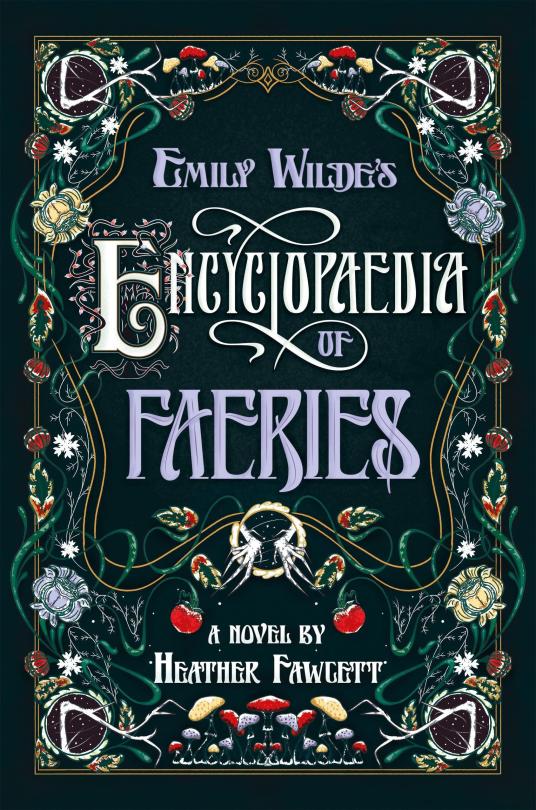
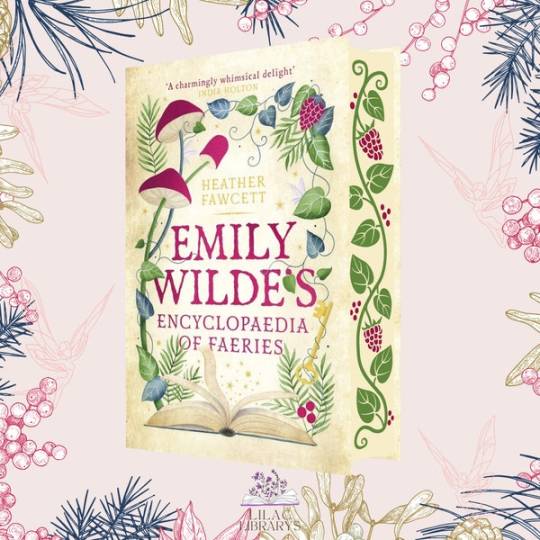

0 notes
Text
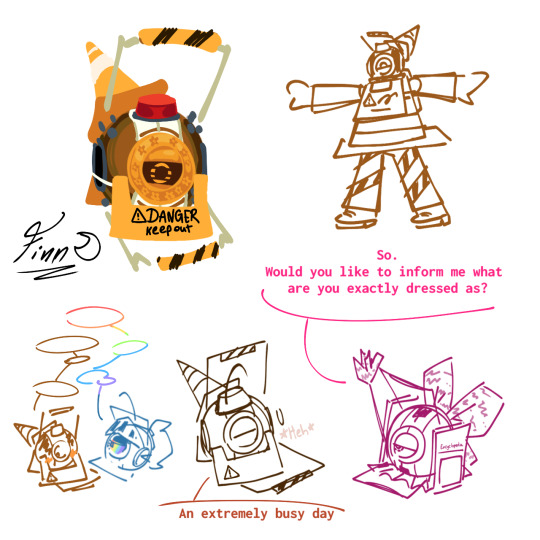
So i decided that following art prompts was not my thing but I also wanted to have something to do for the month, so I thought that maybe I could do some silly Halloween related doodles to spend the time !!
These costumes were very fun to draw, im gonna think abt these for a while,,
#portal#virgil portal#fact core#<-added because they appear in one of these too#does rainbow core have a tag?#rainbow core portal#raingil#did i spell their ship name right?#fact core is dressed as an encyclopedia fairy#because i thought that would fit em#virgil is asking for rain's serial number shhh
42 notes
·
View notes
Text
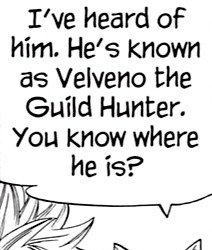
11 notes
·
View notes
Text
['Human Virtues' to 'Secret People']
"The human virtues which commend themselves to fairies are those which render humain intercourse agreeable to them, for a point which is always striking us in fairy legend is the dependence of fairies upon mortals. Two different and almost contradictory traits are asked of humans : they should be close and private, well able to keep the fairy secrets and to guard against infringements of fairy privacy, often fond in solitude and contemplation : and they should be open and capable of generosity, ready to share with anyone in need and to speak the truth about their own plans and quests.
The first is necessary if the traditional way of life of the 'Secret People' is to be preserved, and the second is congenial to the fairies as guardians of fertility and growth."
[K. Briggs, in An Encyclopedia of Fairies.]
10 notes
·
View notes
Text
Pierre Dubois: An introduction
Have you heard of Pierre Dubois?
If you live in a French-speaking country and have interests in fantasy, you probably have. Else, you might have never heard of the guy.
I discovered Pierre Dubois, like many other people, through a trio of big encyclopedias with bizarre, beautiful and disturbing illustrations - each one centered around a different “type” of supernatural being. The Great Encyclopedia of Lutins (Imps/Dwarfs), The Great Encyclopedia of Fées (Fairies), and the Great Encyclopedia of Elves. This trio of encyclopedias, the product of “twenty years of research”, and released in the 1990s, became a MASSIVE hit present in every library and every bookstore across France. And I will speak of them in relation to fairytales - but we need to talk about the man himself.

Who is “Pierre Dubois”? He is the first and most prominent “elficologist” of France (in French, “elficologue”). This word, which designates the study of elves, was originally a joke-word invented by Dubois during an interview about what he did in life - but it soon became a term everyone used to describe him, as a result he also used it himself, and soon it became official. The “elficologie” (elficology) became the word used to designate all those that studied elves and fairies, the study of what Dubois himself called “Faerie”.
Pierre Dubois is a story-teller, a writer and a scholar who was always fascinated by fairies, folklore and fairy tales. Before the enormous success of his Encyclopedias, Pierre Dubois was mostly known for his work on both radio and television shows: since he was a collector of legends and folklore from every corner of France (and later every corner of Europe), he put it to good use and brought all the legends and folktales he kept finding to the radio or the television - these radio shows of his went on for nearly thirty years. He also started to do some BD (bande-dessinée, the French equivalent of comic books) work but it wasn’t that successful (his BDs really boomed after the Encyclopedias however).
With his work and Encyclopedias he really created a true “fairy craze” as he woke up back a passion for all the bizarre creatures and unusual monsters of folklore, and ever since all of his books have been hits - because he wrote many more books and encyclopedias, about trolls, about the folklore of the months, about ghosts... He is even called “the Levi-Strauss of the fabulous”. Pierre Dubois himself is a very excentric and bizarre man with unusual habits. He likes to write by hand, refusing to use computers or even typewriters. His first true reads, during his teenage years (as his father during his childhood disliked seeing him reading and wanted him to focus on more “useful” things) shaped strongly his view of the world: Jean Ray and Sherlock Holmes. As a kid he collected pirate stories, the Grimm fairy tales and the Bob Morane novels , and while he did read some comic books (like Giffey’s Buffalo Bill) he had to do it in secret due to comics ot being allowed in his family. He had a brief carreer as an illustrator before starting to write - and he was an illustrator for the American magazines “Eerie” and “Creepy”. His first attempt at having a book publish was quite unique as, at fiftee years old, he sent his first book to an editor written with a goose feather on parchment and bounded by leather ; and when he got refused, he sent the manuscript again... WITH ILLUMINATIONS AND BOOKMARKS MADE OF HERBS. During the ten years he spent collecting legends and fairy tales in remote corners of France and countryside areas where witches and medecine-men were still a thing, he took the habit of going around dressed all in black, with a cloak, wearing his hair long, and with his pet raven on his shoulder (pet’s name was Nao by the way) - which actually did intrigue and fascinate people so much it eased a lot his collecting work. Oh yes, and his personal answer to who was Jack the Ripper is that it was Peter Pan - an idea he allowed Régis Loisel to use in his own BD about Peter Pan.
And to such a strange and unusual man, corresponds a strange and unusual writing style. Pierre Dubois has strong likes and dislikes. He admires Jean Ray that he hails as one of the best writers of all times ; but he actually dislikes Tolkien and prefers to him Lord Dunsany. Despite his huge “fae” work, he actually doesn’t like much fantasy, but is a die hard fan of magic realism. His biggest influences are Bram Stoker, Charlotte Brontë, Mary Webb, Lewis Carroll, Walter Scott and Robert Stevenson. Similarly, his tastes of illustrations draw him towards Arthur Rackham, Richard Doyle and Gustave Doré. As for his writing methods, Dubois in his own words can spend “one hour on one sentence”, and he compares his writing to an “alchemy”, as he tries to create sentences so that they would resonate like “magical incantations” or “beautiful music”. When he writes, he always places himself in a specific ambiance - he surrounds himself with photographs, pictures, objects or natural elements tied to the subject he is writing around, all the while listening to “repetitive” music to place himself almost in a trance (such as Gavin Bryars’ music).
And he became so famous and important he participates to a lot of folkloric festivals, literary salons, he does public story-telling to children in French castles (children usually like him due to his unusual appearance, as he is a big fat bearded guy with wild hair, he is often compared to “an ogre”, “a giant” or “Hagrid” by kids, while Dubois describes himself as a mix between Captain Hook and Peter Pan) ; and he notably is the chancelor of the “Center of the Arthurian Imagination”, a big cultural association/center of the Bretagne area dedicated to keeping alive the Arthurian legends of France.

Anyway that’s all for the public image. But to speak of my more personal and prosaic experience with this man, I’ll speak of his Encyclopedias, the peak of his fame.
How did Dubois create those encyclopedias? He compiled everything he could find. His own personal collection of folktales and fairy tales, but also a HUGE compilation of various books from different languages and eras (many of them I could’t find back, either because they are THAT RARE, either because they don’t exist anymore - or maybe even never existed) ; and by everything I mean everything. Fairy tales, folktales, folklore, legends of various kinds, from every country of Europe and even from countries and cultures outside of Europe (Asia, America, Australia, Africa...). He also included folk rites, superstitions, actual historical facts and anecdotes, ghost stories, local beliefs, mythologies, pagan religions, monotheistic and “modern” religions, “folk-Christianity” as it developed itself in France though saint cults and unusual tales about angels, demons or the Virgin Mary...
And this is both one of the greatness and weakness of his Encyclopedia. It is great because by reading them you’ll have a HUGE side of the world’s culture in your brain and you’ll learn TONS of useful things and get tons of references. But on the bad side, he mixes gleefully witches, fairies, gods, ghosts from very different countries and eras in one big mix-mash without clearly defining the differences between them, and blurring the lines between everyone and everything. This is because Dubois has a very unusual way of presenting his research and descriptions: he doesn’t work in a “scientific” approach, he works with a “writer” approach. His texts are always very flowery, very poetic, using all sorts of words from the local term untranslated to old-fashioned names not used anymore, and when he can tell something through a story or an anecdote rather than a blank description or explanation, he will do it. The result is a fascinating reading experience that can conjure up visuals and ambiances like you can’t have anywhere else... but from personal experience, DO NOT TRY READING IT OUT LOUD! While it can be pleasing to read on your own, you really need to get the hang of his unusual phrasing and rythm, and I can tell you that trying to read his books to someone will turn the text into a boring and uncomprehensible mess because while the sonorities will be good in your head, you’ll need an extensive training to make them go out of your mouth in a pleasant way.
And while it is always a pleasure to have a Dubois book in your home because it is a poetic mine of info and stories, you will never actually see a Dubois book being used for any kind of serious folkloric research. Why? Because Dubois, as a true storyteller, likes to flesh out his characters, to invent new angles to explore legendary figures, to twist the traditional fairy tales. And so he will often for example theorize about what led to a monster being what it is, or what happened to a fairy after a given story. He will often add little trivial details in order to create a full “lifestyle” or “culture” of the species he describes. He uses humor or irony to describe the “fae folk” and so you can rarely read him in first-degree. And in his all-encompasing, all-including view of the “legendary” world he will materialize existing relationships between folktales OR invent them to give more “coherence” to his new Fae world. It isn’t uncommon for him to include in his stories other entities he describes in other articles as a background or side detail, thus creating a “fairy history” with its own chronology and an “elven genealogy” with its own magical evolution - these things never actually explicitely spelled out or described, but that the reader has to recreate by collecting the clues scattered throughout his books.
Because that’s what he does. A lot of re-creation, a lot of re-invention. At least he does that in these Encyclopedias. The result is an insanely fun read filled with discoveries of little-known folklore and a re-discovery of a entire world of the supernatural and a new “world-mythology”... But his claims need to constantly be checked and countered by more serious works if you want to do actual folkloric or historical research. Dubois is clearly a writer and a story-teller first and foremost. I do appreciate the enormous bibliographies he gives in each of his book, but I would love to see one day all the material he collected during his ten years-trip to France (I haven’t found it published anywhere however).
For me, I appreciate his Encyclopedias as an object of art, as a fantasy work and as a discovery/rediscovery of the “fae folklore”. I will never tell anyone to not look at them (especially since the illustrations are WILD). But I noticed that people tended to take his words in a way a bit too literal, repeating some things that are clearly Dubois’ inventions as if they were cultural facts, and so there should be a warning label when it comes to these VERY famous books.

And to end this introduction post, I’ll list there for the sake of the trivia some of the opinions and points of view Dubois defends.
# He is a great lover and defender of fairy tales, but he has a truly “folkloric” approach to them: he defends the idea that fairy tales are a product of popular culture, and that it existed since the dawn of humanity, its characters being inherited from the original goddesses and sorceresses of humanity. He interprets fairy tales as being allegorical stories about the cycles of seasons and the phenomenon of nature, with a cathartic function (such as providing hope and comfort during winter). He considers these tales and legends as being an encouragement to respect nature, and the result of a collective memory that is passed down from generation to generation, alongside the figure of witches that are for him the embodiment of all “our fears and anxieties”. He also explains how fairy tales are initiation tales that warn children of the dangers of the ogres and dragons, and encourages them to become allies and friends of the spirits of nature - though still keeping fairies as ambivalent entities.
# Pierre Dubois is very happy with the recent passion and success of the “faerie” genres and the “literature of the imagination”, he does believe that the fame of things such as The Hobbit, Harry Potter and role-playing games allows people to find back “the sense of the marvelous, of the epic, of the knighthood and the fairy tale”. However he does express one big regret, that “special effects replace magic and make the fantastical and spiritual disappear” from those stories ; he also likes to remind people that “fairies don’t like when we speak about them” and fears that there could be an over-abundance of fairy-related books and a “commercialization of the fairy”.
# He is a strong ecologist, though he isn’t so much concerned about stuff like climate change but rather believes how you need to listen and respect nature because only contact with nature can “wake up imagination” - he also likes to remind people how in legends fairies warn humans not to cut some trees or build on some lands before taking revenge on those not listening to them through natural disasters - as a result his motto is “If you hurt nature, it will hurt you in return” and he belives that some of the huge floods France knew in his lifetime were “fairy punishments”.
# He keeps preaching the virtues and powers of the imagination, especially towards children: he believes they should be soaked in drawings, theaters and songs to wake up their imagination, and he dislikes how for a long time in France all those activities were stopped around six or seven years old, the “age of reason”, due to them becoming “useless”. He insists that adults should never deny the emotional or imaginary sides of life, and he also strongly dislikes any kind of children literature that is “educative and realist”.
# Finally, Pierre Dubois strongly dislikes today’s society and the modern world due to denouncing the over-abundance of “scientism” and “materialism” in the ruling classes, and how modern culture relies on greed and selfishness. He claims that the “waking up” of the imagination and the “revival” of the Faerie was in France a natural extension of the May 68 revolt (I’ll let you search for that on your own), and he has a great interest and kinship with two type of sub-cultures: the gothics, and the punks, due to him sharing with them the idea of an unconventional freedom. Dubois defends the idea that the fairies are the symbol of the “rebelled ones” and of the “wild ones who say no to an established order” ; and he also strongly dislikes how editors like to divide literature into categories and sub-categories. This all results in his strong criticism of television (that “prevents” a natural transmission of countryside and local culture, and “replaces” the stories of the old folks) and of school+monotheistic religions (that for him work to make “all the small gods of nature” disappear). In fact, his wish would be that school taught less civic classes and more philosophy classes and fairy tales - and while he does preach a return to the ancient “rites of passage”, he also says in our modern day we shouldn’t fall into the same excesses as in the past concerning those rites.
#pierre dubois#french culture#fairies#fae#faerie#folklore#folklorist#encyclopedias#fairy tales#fairytales
92 notes
·
View notes
Note
What kind of fairy is associated with R? 🦋
Here’s a few for R! 💙

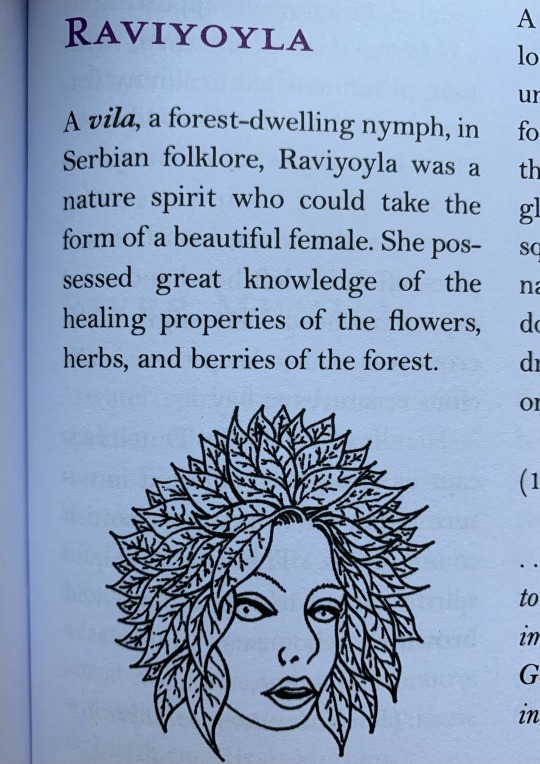
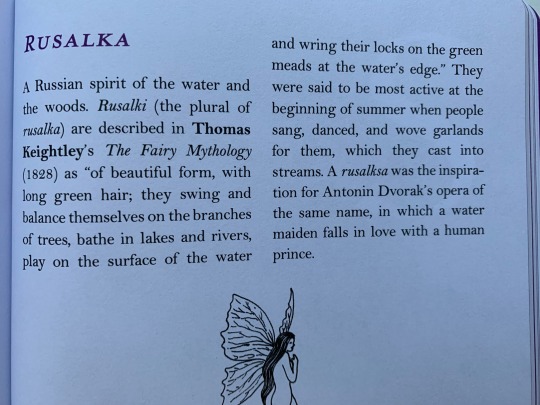
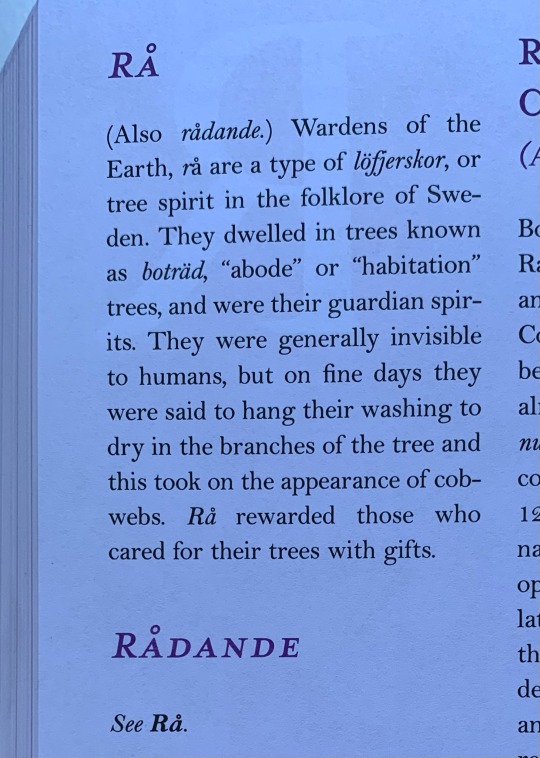
4 notes
·
View notes
Text
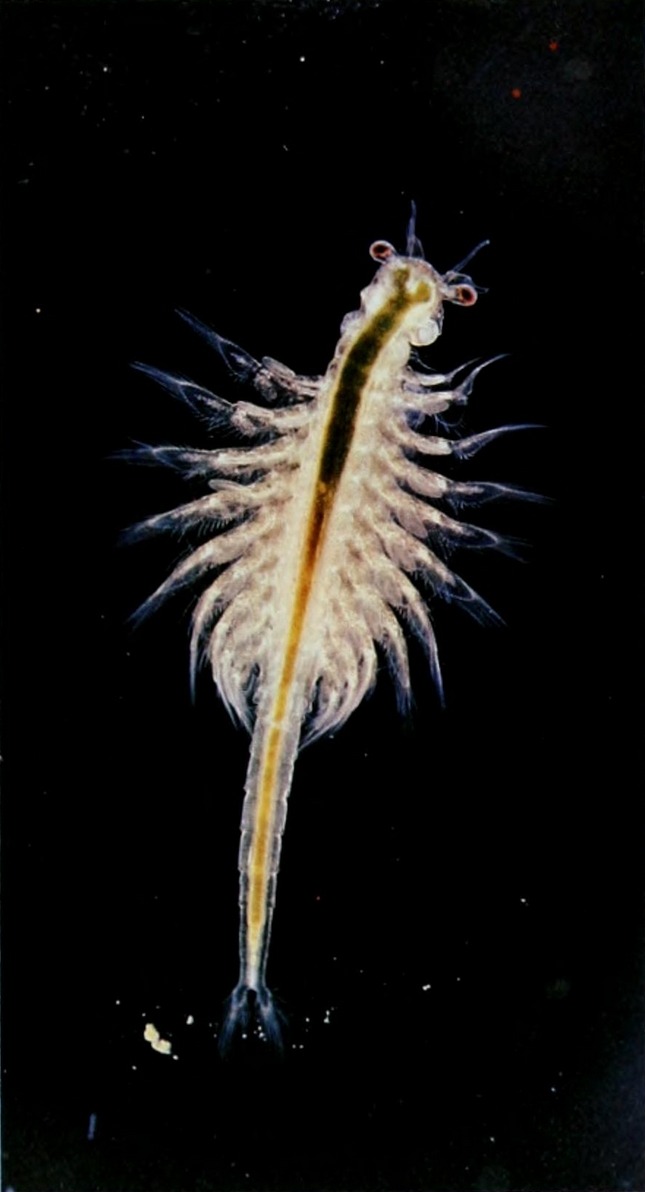
Brine shrimp
By: Macro-Express
From: The Illustrated Encyclopedia of the Animal Kingdom
1968
#fairy shrimp#crustacean#arthropod#invertebrate#1968#1960s#Macro-Express#The Illustrated Encyclopedia of the Animal Kingdom (1968)
87 notes
·
View notes
Note
Boring question: is Dark Elf supposed to be a drow or a dokkalfar?
I don't think she's meant to be a fantasy thing.
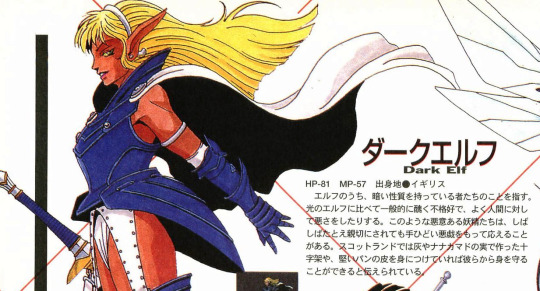
The Akuma Daijiten profile talks about the difference between dark elves and light elves, says the origin is England, and mentions Scotland and the fruit of the mountain ash, but this is obviously an incomplete picture. It at least tells that they weren't using fantasy sources, which brings me to Katharine Briggs' Encyclopedia/Dictionary of Fairies:
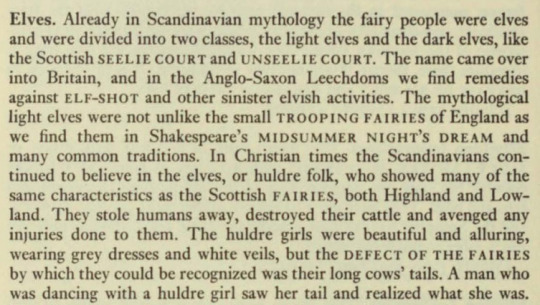
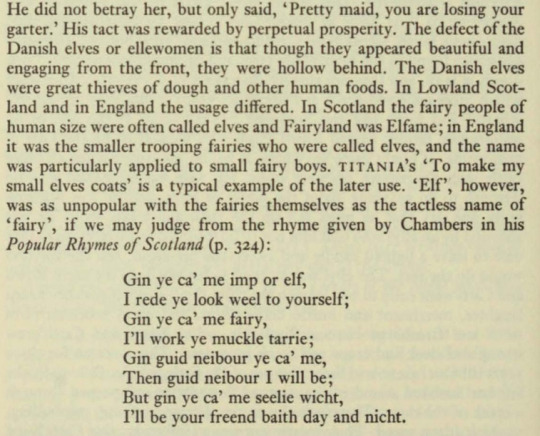
So, though stated otherwise maybe because fairy = England by their understanding, maybe Dark Elf is just one of these human-sized Scottish fairies. She is in the Fairy race, after all.
17 notes
·
View notes
Note
I read the Emily Wilde book and I really liked it. I really enjoyed it. Thanks for the recommendation, I’m now getting book 2 in the series. In case you didn’t know Emily Wilde 2 was out in Jan 2024
I'm glad you enjoyed it! I read the second book on the day it came out bc my friends and I have zero chill about the fairy academics, it's very, very good and I hope that you enjoy that one as well!!! :D
(Book 2 features the most girlfail flirting of all time Emily I'm so proud of you. it's so nice to feel represented.)
#my only complaint was they got Cambridge wrong but that's only like 2 chapters of the book anyway#UK academia doesn't have tenure and has never had tenure#asks#emily wilde's encyclopedia of fairies (my beloved)
2 notes
·
View notes
Text
I'm not usually a fan of lazy, selfish if overall harmless characters who don't care much for the people around them although merely in a careless way and not in a purposefully cruel way - but I have to admit that wendell from emily wilde's encyclopedia of fairies was very entertaining, especially in his own pov, and especially describing how he just casually rewound time so he could kill someone again. there's really nothing I can admire about him, but he is incredibly entertaining.
#I tend to assume that everyone chooses favourite characters for the same reasons I do which is basically#character who's admirable enough to be impossible yet frustratingly stupid enough to be pitiable#but maybe not. either way wendell's so much fun. I really cackled physically cackled at that line#which doesn't happen very often at all I barely even snort at characters' antics anymore#aaah finding an enjoyable book is such a treat#emily wilde's encyclopedia of fairies#mine
2 notes
·
View notes
Text

Leanan Sidhe from Monster Girl Encyclopedia.
In the original, she is a very small girl, and in my picture, as usual, she is an adult.
For my patrons from level 4 and above I made a short timelapse video of drawing this sketch. Video will be sent in rewards at the beginning of the next month.
#candragloombladeart#monster girl encyclopedia#fairy#artists on tumblr#monster girl#sketchbook#sexy fanart#art#traditional art#sexymonstergirl#monstergirlencyclopediafanart
10 notes
·
View notes
Text
Alright, I knew it in my heart to be true because I write it all the time, but I was just reading a story and literally went “Ah!” out loud when it occurred, and have truly realized that the best trope is when a love interest finds out their crush isn’t eating enough for what ever reason and then Make it their Job to ensure this person eats well. It’s top tier trope of all time.
#rose and rambles#of course this extends to cooking together and stuff but even the 'you skipped breakfast???? grab your coat we're going to the cafe *now*'#is just *chef's kiss*#in the book it was like two paragraphs of the character remembering all the breakfasts she's shared with this guy because he insisted#because she's the Academic Who Didn't Bother with Breakfast#and he's her rival/colleague WHO OBVIOUSLY CARES ABOUT HER SO MUCH IM AAAAAAHHHHHHHHHHHHHHHHHHHHHHHHH#just from the back of the book and the way this guy is introduced#it's obvious they're gonna end up together (ya know hopefully) and#i was like yeah this is cute#because she acts like he's a pain just trying to snipe credit for her research on fairies BUT I AM CONVINCED HE'S JUST DELIGHTED TO BE THERE#WITH HER#but after the breakfast thing im just screaming#he loves her so much he makes sure she eats well im fhbdvbhdbjsbhfvhbdjhfvb#anyway the book is Emily Wilde's Encyclopedia of Faeries by Heather Fawcett#so if you want a book about academics researching faeries#so far it is a delight
15 notes
·
View notes
Text
Fucking smooth brains saying “just memorize the type strengths and weaknesses” as if i DIDNT already memorize them growing up only for them to change several times since then
#fairy fucked it up for me#not to mention type resistances#i just use my walking pokemon meta encyclopedia bf#this is abt pokemon
9 notes
·
View notes